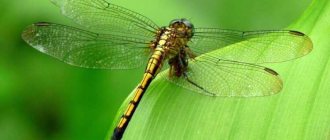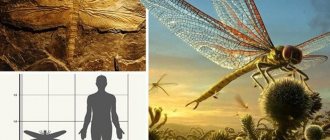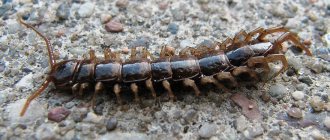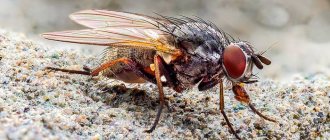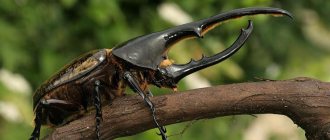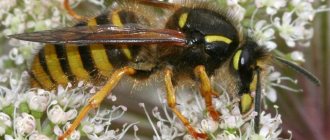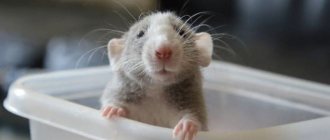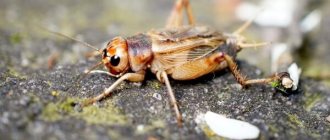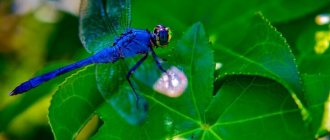Dragonflies are winged predators that captivate with their grace and beauty. They are one of the oldest amphibious insects that raise their offspring in an aquatic environment. The beautiful girl dragonfly is an amazing creature with a mother-of-pearl body and shiny wings. It is an excellent indicator of the cleanliness of a reservoir. If an insect has settled on its shore, then there is no chemical waste in the water.
Description of the species
A small dragonfly from the family of beauties fully lives up to its name - beauty girl. The body of the male is blue-green with a metallic tint, the female is bronze green. The glossy shine of the chitinous cover creates a unique impression. The length of the insect is 45-49 mm, the wing size is 30 mm. A distinctive characteristic of the species Calopteryx virgo is the absence of pterostigma, a thickening at the leading edge of the wing. The female has a light spot in its place. The photo shows that female dragonflies, beautiful girls, have transparent wings and gray-brown veins with a metallic sheen.
The head is large, mobile, two complex compound eyes occupy most of it. In homoptera dragonflies they are located on the sides. The antennae are short and thin. The oral apparatus consists of an unpaired upper and lower lip and paired jaws. It is strong enough to tear and chew prey. The dragonfly has 6 legs consisting of 5 parts. The front pair is the shortest. All limbs are covered with two rows of spines.
Information. Dragonflies do not use their limbs to move. They need legs for landing and takeoff. The front pair is used to capture prey.
A related species of dragonfly lives in Russia - the brilliant beauty. Their body length is 50 mm, the color of males is blue with a green tint and a metallic sheen, females are golden-green. The wings of males are transparent with a wide blue band, females are greenish. The two types of beauties can be easily confused. Dragonflies are slow, often sitting on coastal vegetation. They live over a wide area from Western Europe to about. Baikal, in Asia and northern Africa. Representatives of the family of beauties in some regions of Russia are under threat. The damsel and glossy damsel are losing their habitats due to water pollution. Both species are included in the Red Book of the Kurgan and Chelyabinsk regions.
Habitat
The beauty-girl species lives throughout Europe, Western Siberia, Mongolia, and the Far East. Dragonflies can be found in Korea, Japan, and northern China. To the north, the habitat extends to the Arctic Circle. Dragonflies prefer low-lying places and rarely climb to a height of 1 thousand. m above sea level. Insects choose lakes or streams with a slow flow. They are attracted by a large amount of coastal vegetation.
Habitats
The beauty girl lives near slowly flowing streams and small rivers, the banks of which are rich in riparian vegetation. The water should not be rich in nutrients (eutrophic). Females usually sit among this vegetation, while males fly above the surface of the water along the shore. Animals need trees and shrubs as resting places, but tall herbaceous plants are often sufficient. The larvae live in streams and mainly depend on aquatic plants as they need stems and leaves, especially in areas with stronger currents, to hold on to. The larvae are sensitive to the lack of oxygen in the water.
Female
Insect lifestyle
Dragonflies are agile predators; their diet consists of small insects and invertebrates. They grab and eat prey on the fly. Adults are diurnal; they are most active on a clear sunny day. They spend the night sitting on bushes or tall grass. Summer period is from April to October. Females usually settle in forest clearings and fly to the banks of reservoirs to mate and lay eggs. Males choose coastal areas for themselves, where they live, hunt and wait for a partner for procreation.
Interesting fact. Dense vegetation is necessary for dragonflies not only for rest, but also for protection. Small insects with large wings are easily blown away by the wind.
The life of a beautiful girl dragonfly can be divided into two periods:
- Juvenile - begins after the imago emerges from the larval shell. It lasts about 10 days. The dragonfly actively feeds away from the reservoir until it acquires a characteristic color.
- Reproductive - having reached sexual maturity, insects return to water. Mating and egg laying occurs.
Dragonflies are insects with incomplete metamorphosis; their life cycle has three stages: egg, nymph, adult. Most of their life is spent in water - 2-3 years. The adult phase is much shorter - several months. Dragonflies are very shy; they fly into the air at the slightest noise or vibration in the air. Quick reaction saves insects from birds, amphibians and other enemies.
Nymph - predator in a pond
Dragonfly larvae are called nymphs; in appearance they differ significantly from adults. This is due to being in a different environment. Nymphs of beautiful girls prefer cool ponds with running water. Their body is elongated, brown in color, and their limbs are striped. Small predators eat fish eggs, mayfly larvae, mosquitoes, and small invertebrates. Nymphs are sensitive to water pollution; they survive only in clean water bodies. This is a kind of safety marker for a river or stream. In many countries of Central Europe, insects are listed in the Red Book. The lack of clean water bodies has threatened the existence of beautiful girls in Germany, Austria, and Switzerland.
Lifestyle
Adult beauties appear from May to September. In daylight they actively hunt, and at night they hide among plants. These dragonflies fly most readily on warm sunny days.
Males of beauties occupy home areas along the banks of reservoirs, and females often fly far from the water, appearing in whole flocks in places illuminated and well-warmed by the sun.
The beauty's flight is slow and uneven, but very maneuverable. She makes sharp turns, flies backwards and can even hover in one place like a helicopter. Deciding to rest, the dragonfly sits on a stalk or blade of grass. Its wings are folded with their upper planes inward or slanted back.
The beauty hunts insects in the air, grabbing them with the first pair of legs extended forward; its victims include all kinds of butterflies, beetles, flies, wasps and other dragonflies. The dragonfly often devours small prey on the fly, and deals with larger prey by sitting on some plant.
Features of reproduction
During the breeding season, females begin to circle above the water in search of a place to lay eggs. Noticing their reflection, the male begins courtship. The mating process occurs in a unique way - the male holds his partner with special anal appendages called the prothorax. The female places the genital opening to the second segment of the partner's abdomen. They remain in this intricate position for 5-10 minutes. Mating usually takes place on plants.
After fertilization, females lay 200-300 eggs on the stems of aquatic plants. At the same time, they not only land on the surface of the water, but also dive for a long time. Before diving, the beautiful girl wraps herself in an air bubble, so she can stay under water for about an hour. The female lays oblong eggs, descending along the stem of an aquatic plant, looking for cavities in it.
The larvae stay in places with weak currents, this allows them to better absorb oxygen. For breathing, at the end of the nymph's body there are three triangular-shaped gill plates. This organ regenerates after being attacked by predators or molting. The last stage of development ends on land. Nymphs emerge from the water, climb onto plant stems or driftwood, where they metamorphose into adults.
Dragonflies are an important part of the environment; reducing their numbers has a negative impact on the balance of nature.
Description: What does a dragonfly look like?
Adults
- Slender, elongated body 20-130 mm long
- Head
- Breast
- 2 pairs of wings
- Three pairs of legs
The female and male often have different body and wing colors (sexual dichroism). The weight of an adult individual can vary depending on the species, for example, a very small individual weighs about 20 mg, and the “emperor watchman” species weighs about 1200 mg.
The insect's head is large, with huge eyes on the sides. It is very mobile and can rotate 180 degrees and tilt back 70 degrees. Compound eyes may consist of 28,000 “facets” (ommatidia).
In addition to compound eyes, the dragonfly also has three simple eyes that form a triangle. This structure allows the dragonfly to see not only forward, but also to the sides and even behind itself.
- The upper part of the compound eye of the dragonfly sees at a distance, and the lower part perceives closer objects. The visual range of compound eyes is approximately 8 meters.
- The thorax is characteristic of all insects and consists of a prothorax with two limbs, as well as a mesothorax and metathorax with four legs.
- Males have forceps on their abdomen, which they use to hold the female during mating.
- These insects are voracious predators and are therefore armed with sharp teeth.
Wings of a dragonfly
The maximum wingspan of an adult dragonfly can reach 18-20 cm. The wings consist of chitin with a complex structure that allows the insect to easily maneuver during flight. The maximum speed of a dragonfly is comparable to the speed of modern drones: 55-57 km/h.
How is a dragonfly born?
Nymphs
Dragonflies develop through imperfect transformation, that is, their development does not include the pupal stage. Dragonfly nymphs (larvae) are born in or near water from eggs. If the egg does not overwinter, then the nymph hatches from it in two to four weeks.
The first stage of "pronymph" lasts only a few minutes. It does not yet look much like a dragonfly until the “undressing” occurs. After this, the first common features begin to appear.
The nymph undresses approximately 10-15 times, and with each undressing she sheds all her skin along with the respiratory and digestive tract. The nymph develops from several months to several years, and in some species up to 5 years.
Before the last undressing, the nymph stops receiving food and rises into the air, most often onto plant stems, sometimes directly to the shore. Hatching occurs most often in warm weather in the morning.
The nymph clings tightly to the substrate and begins to hatch. This process takes about an hour. After hatching, the dragonfly sits for a while, spreads its wings and freezes before it can fly away. Sexual maturity (by species) reaches from 14 days to a month.
Butterfly nymphs can restore lost organs (regenerate).
Eggs
Dragonfly eggs range from 0.5 to 2 mm in length. Species that lay eggs in plants have an elongated egg shape, while species that lay eggs freely have a round shape with a gelatinous coating.
Reflections in the water
Some of the most beautiful landscapes of nature are reflections in water
.
The world that opens up to us on the surface of the water has completely different boundaries than the real one. Blurred and surreal
, it inspires us with deep philosophical thoughts, and simply gives us an unforgettable feeling of beauty, often complementing what we do not see in the real world...
| head over heels | "playing card" | two shores - two destinies | ||
updated 11.12.2012
It just so happens that this is the second winter I’ve been returning to this page. This time I invite readers of the green pages to plunge into summer once again ;-) with the wonderful paintings of Claude Monet
and take a short trip to France :-)
Repin Ilya Efimovich: “Dragonfly”, 1884
Among the portraits of Ilya Repin, portraits of members of the artist’s family can be distinguished into a special group. He experiments a lot with them, since he writes them “for himself.” One of the most famous such portraits is “Dragonfly”
, painted by the artist at his dacha near St. Petersburg in 1884.
In the portrait, Repin depicted his eldest daughter Vera Repina
.
The composition of the canvas is extremely simple. In the foreground is a girl on a dark picket fence. Behind her is a transparent blue sky with a light haze of clouds and blades of grass of a faded meadow, outlined with a thin brush. She really looks like a dragonfly
, which sits on a branch, waving its transparent wings.
The restless and mischievous girl is about to slide down and run away cheerfully. The sun's rays on the bluish dress seem to strive to dissolve matter in an endless, sun-pierced space. The free, lively pose of a child, the hat funnyly fastened under the chin with a ribbon, the play of sunbeams on her face and neck - her whole playful appearance seems to draw us into the magical world of childhood impressions and dreams
.
For boys and girls, as well as their parents;-)
| Children's riddles about a dragonfly *** Sat on a white dandelion Blue airplane. He warmed his wings in the sun and flew back. Who is this? - Dragonfly! *** A light, fast airplane flies over a fragrant flower. Wings, tail and eyes. This is a miracle... Dragonfly *** Now it’s an airplane, now it’s a helicopter. And her flight is so beautiful that it captivates the eye. Her wing is a continuous pattern, Large, mesh eyes. Flying in the sky... Dragonfly *** Although it is born in water, But it is afraid of water. Dragonfly | Dark blue dragonfly Dark blue dragonfly on a wild strawberry flower. The flap of a wing - dew rolled down, trembling reflections on the grass. The enchanted river froze under the overflow of birds, Clouds float in the depths Under the branches of a sinking willow. A ray of sun slid across the wave, over the buds of pink lilies, circles scattered across the water like laces of tangled lines. Dark blue dragonfly. The sky drinks the nightingale's concert. A tear rolled down my cheek, The frost in my heart of melancholy melts. Olga Andrus |
§ If you have time, take a look at the Literary Lounge of Green Pages;-)
